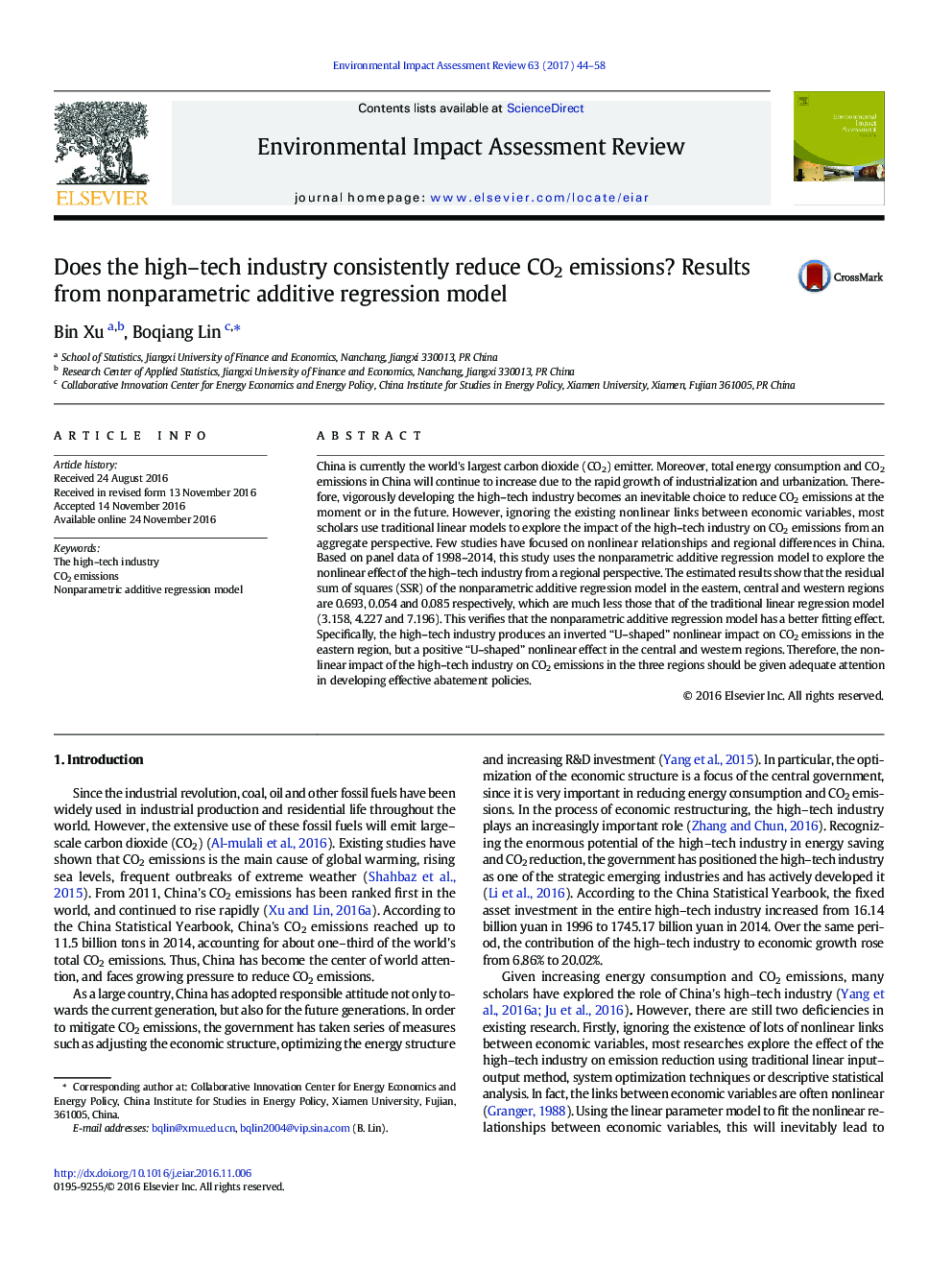| Article ID | Journal | Published Year | Pages | File Type |
|---|---|---|---|---|
| 5115662 | Environmental Impact Assessment Review | 2017 | 15 Pages |
â¢The nonlinear effect of the high-tech industry on CO2 emissions was investigated.â¢The high-tech industry yields an inverted “U-shaped” effect in the eastern region.â¢The high-tech industry has a positive “U-shaped” nonlinear effect in other regions.â¢The linear impact of the high-tech industry in the eastern region is the strongest.
China is currently the world's largest carbon dioxide (CO2) emitter. Moreover, total energy consumption and CO2 emissions in China will continue to increase due to the rapid growth of industrialization and urbanization. Therefore, vigorously developing the high-tech industry becomes an inevitable choice to reduce CO2 emissions at the moment or in the future. However, ignoring the existing nonlinear links between economic variables, most scholars use traditional linear models to explore the impact of the high-tech industry on CO2 emissions from an aggregate perspective. Few studies have focused on nonlinear relationships and regional differences in China. Based on panel data of 1998-2014, this study uses the nonparametric additive regression model to explore the nonlinear effect of the high-tech industry from a regional perspective. The estimated results show that the residual sum of squares (SSR) of the nonparametric additive regression model in the eastern, central and western regions are 0.693, 0.054 and 0.085 respectively, which are much less those that of the traditional linear regression model (3.158, 4.227 and 7.196). This verifies that the nonparametric additive regression model has a better fitting effect. Specifically, the high-tech industry produces an inverted “U-shaped” nonlinear impact on CO2 emissions in the eastern region, but a positive “U-shaped” nonlinear effect in the central and western regions. Therefore, the nonlinear impact of the high-tech industry on CO2 emissions in the three regions should be given adequate attention in developing effective abatement policies.
